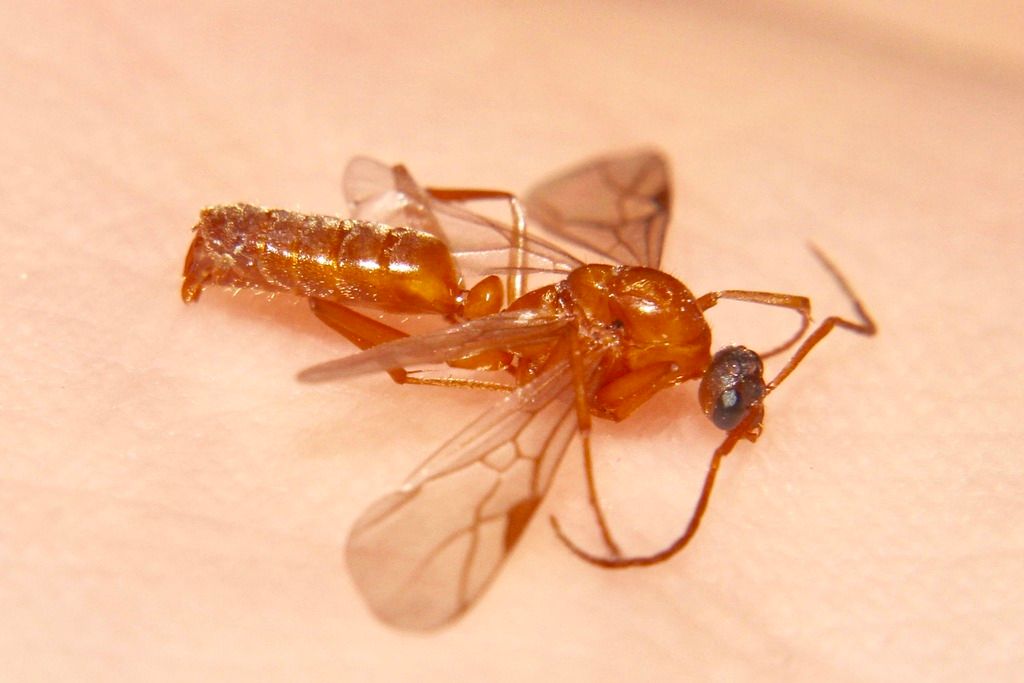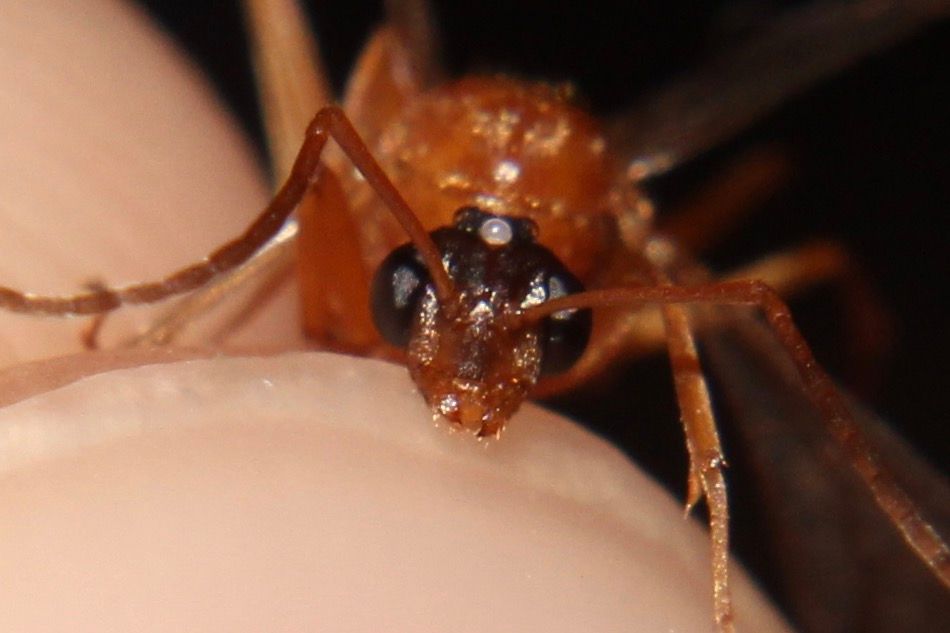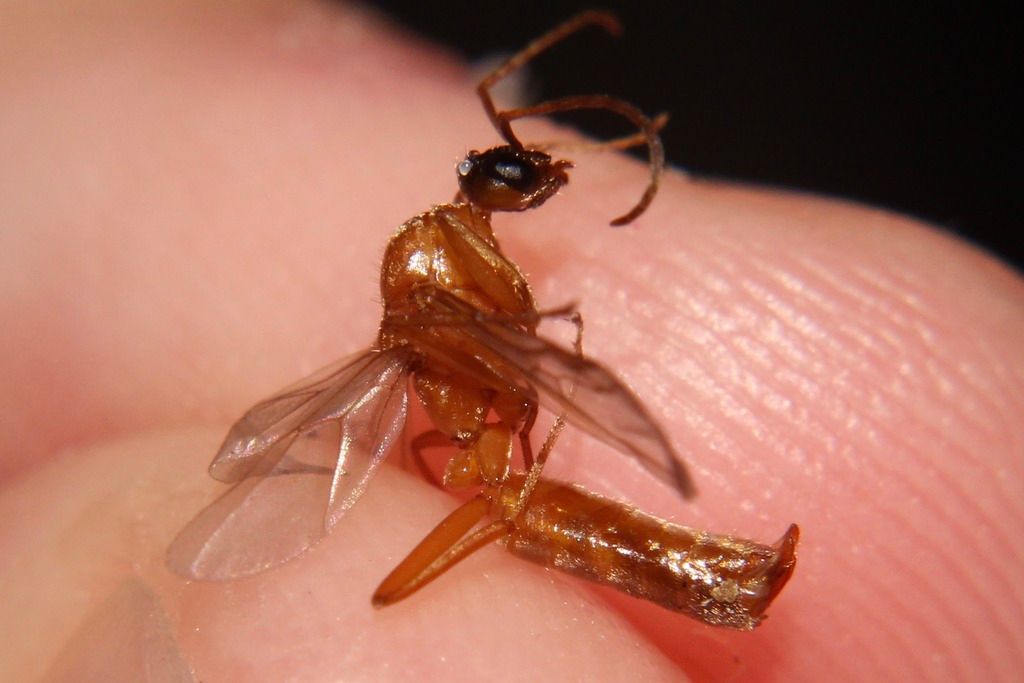Today at 3:00 PM, after some rain, I found a male and a queen in my pool that I do not know the species of. I have tried to find out what they are, but after searching through queen and male specimens on AntWeb, I still can't figure it out.
Queen
Size: 5mm
I kept thinking this was Dolichoderus. The petiole doesn't match and the head shape may not quite match with Dolichoderus either.
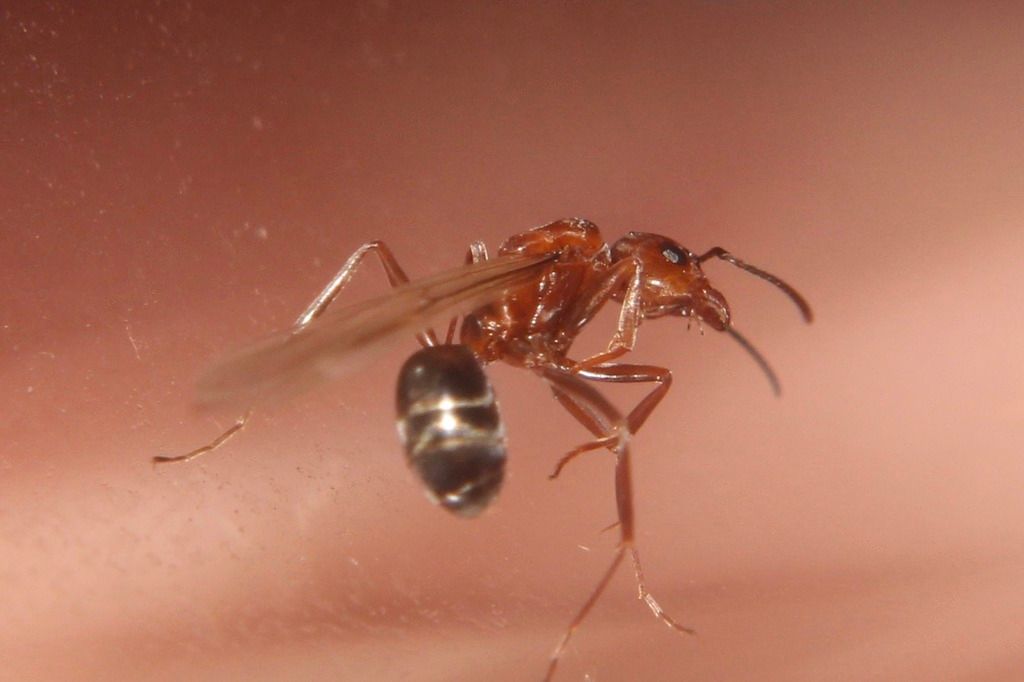

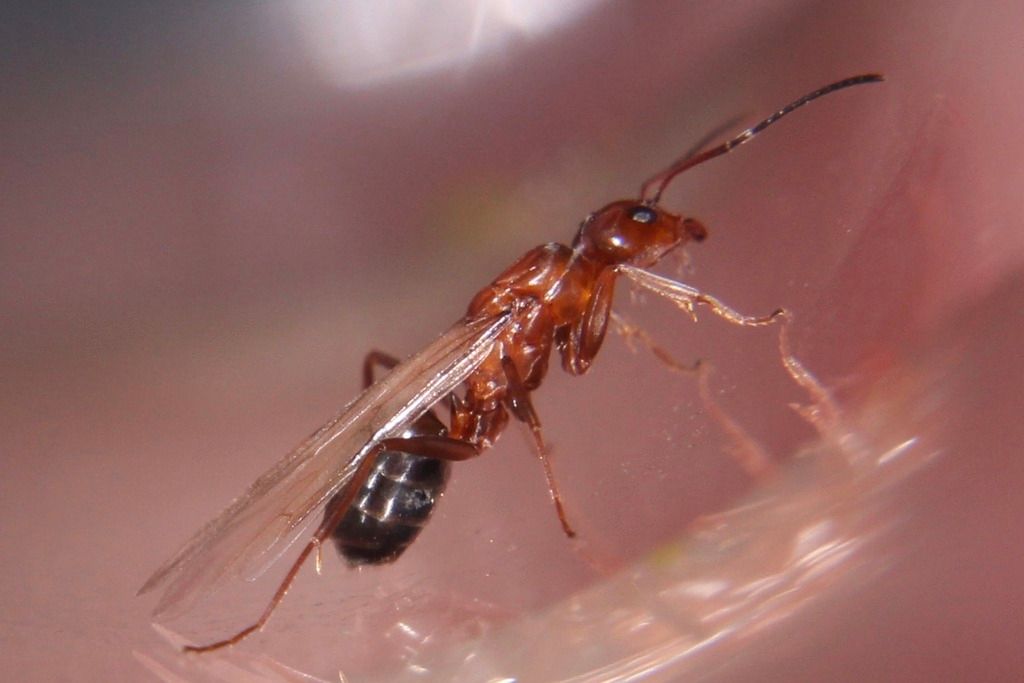
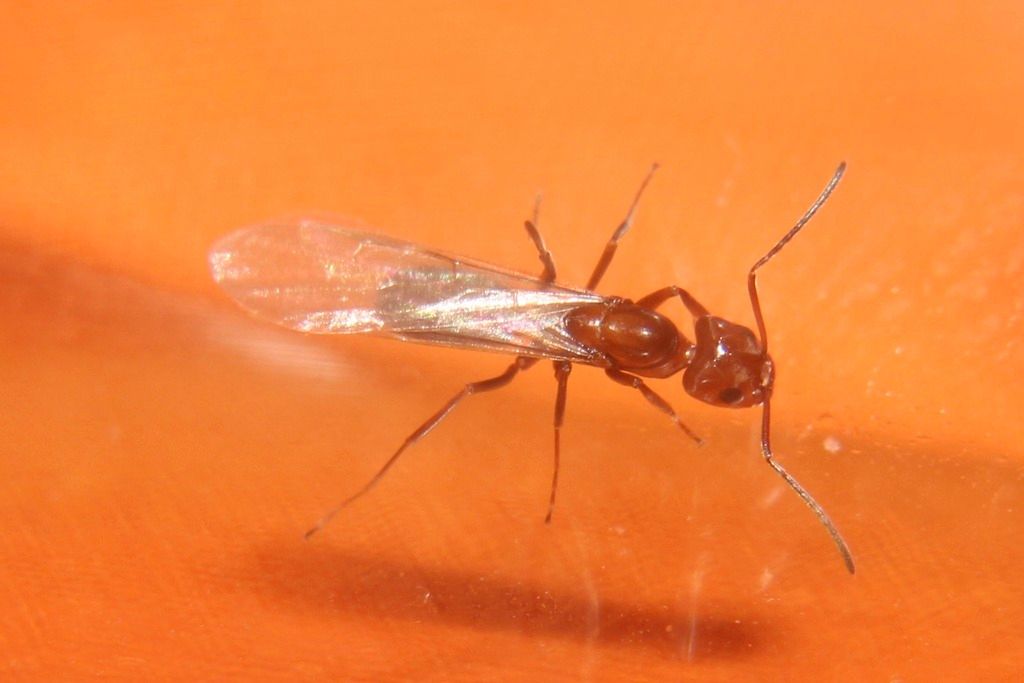

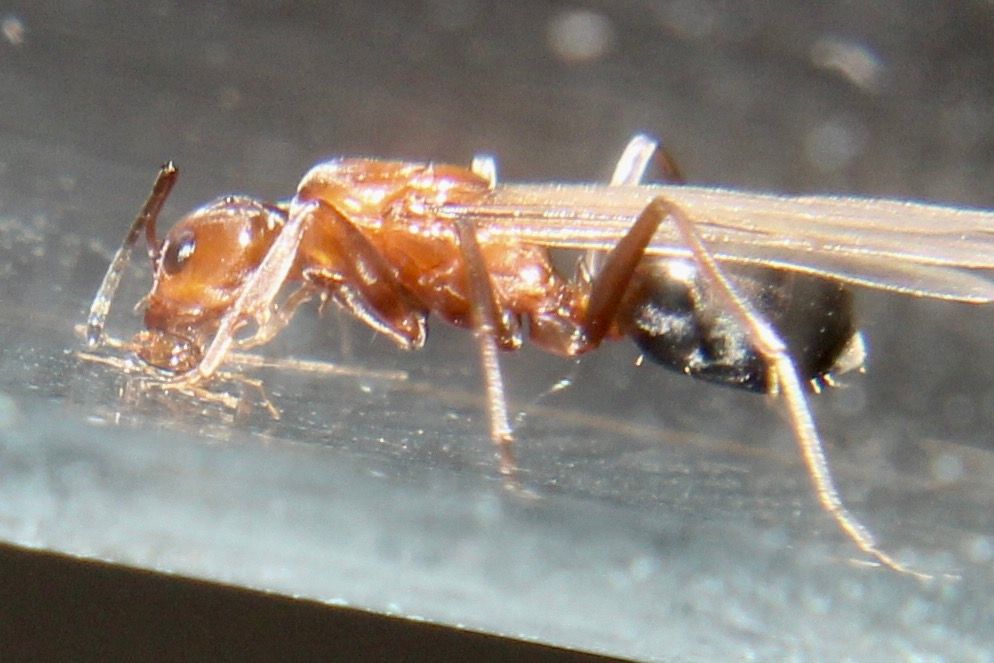
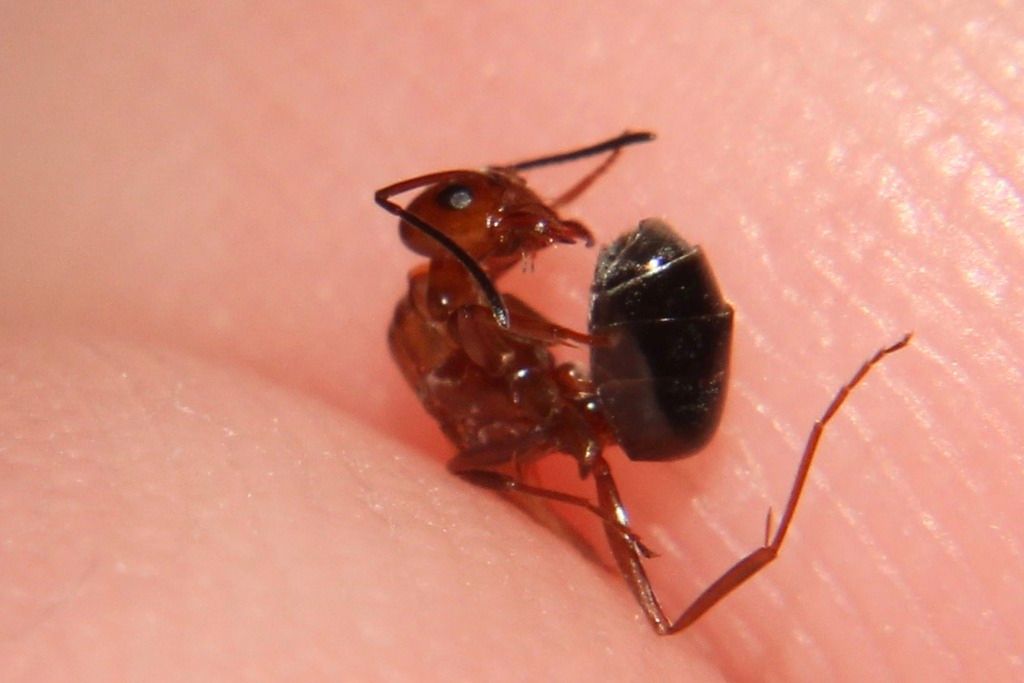
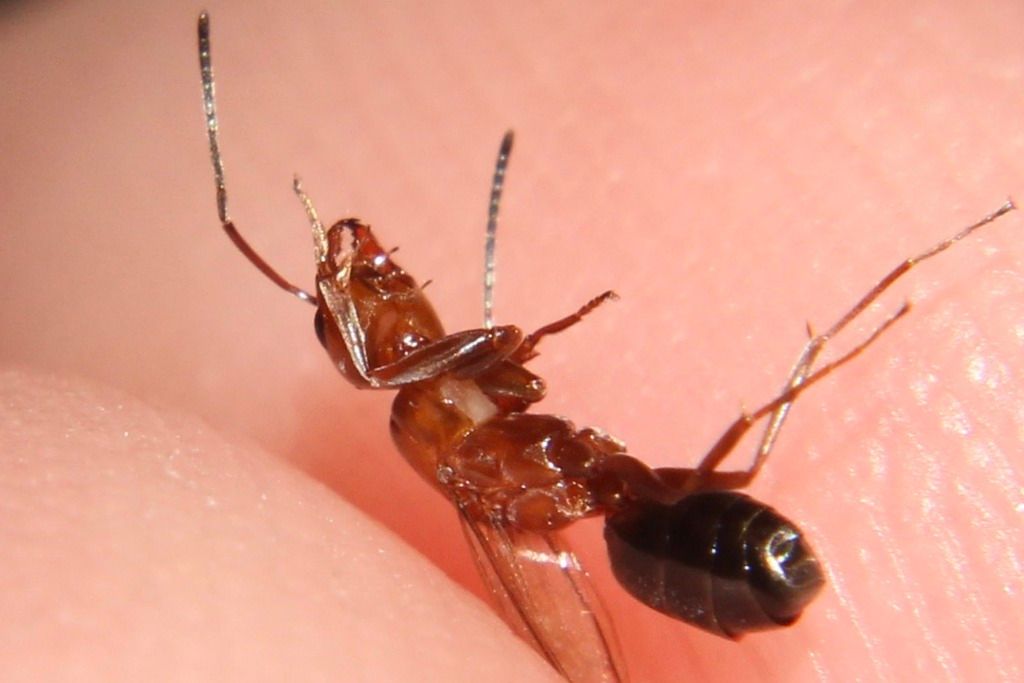
Male
Size: 9mm
I do not know what this is. It has mandibles, elbowed antennae, and one petiole node. I thought it could've been Leptogenys at first but then realized that Leptogenys males do not have mandibles.

